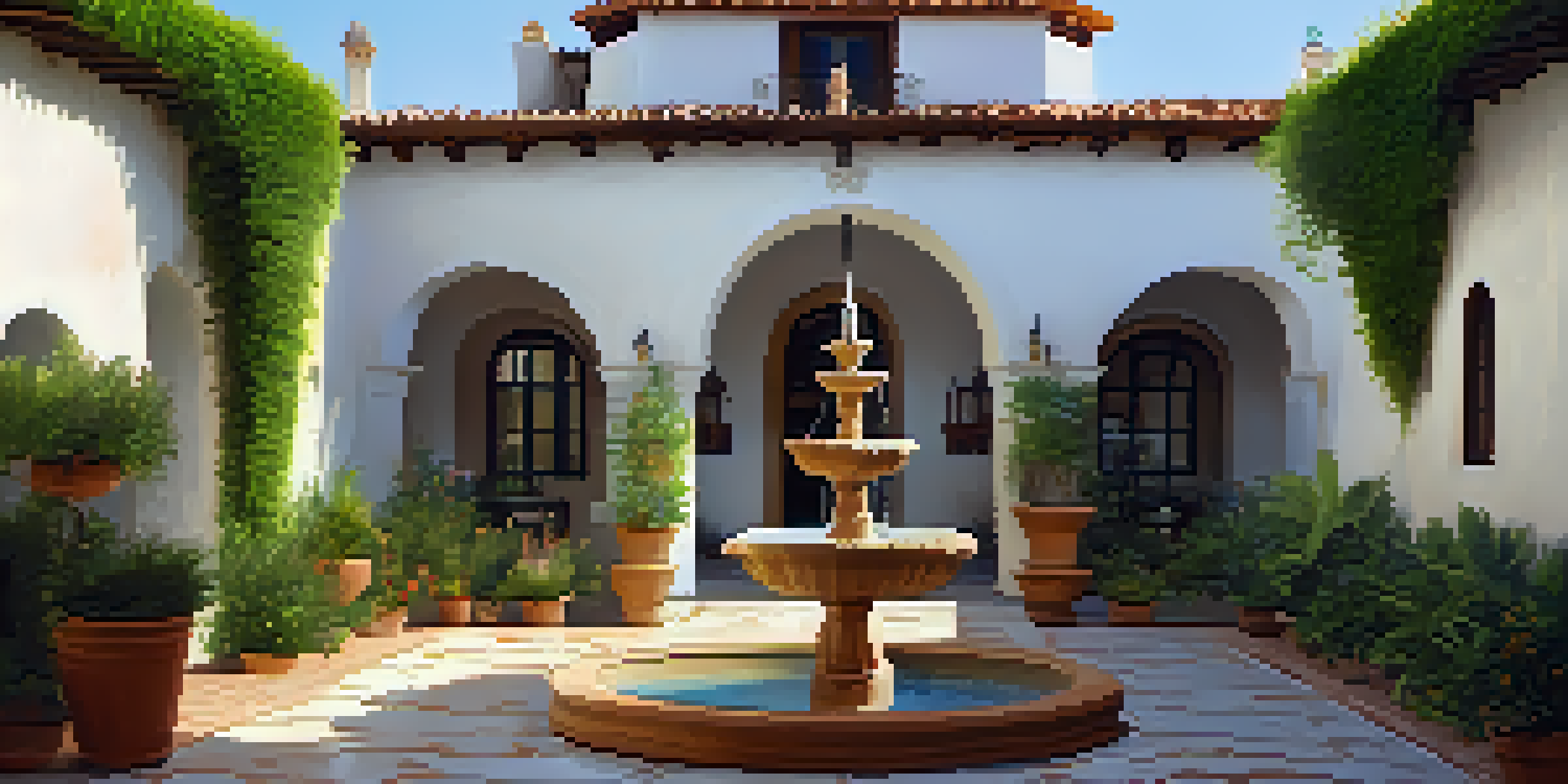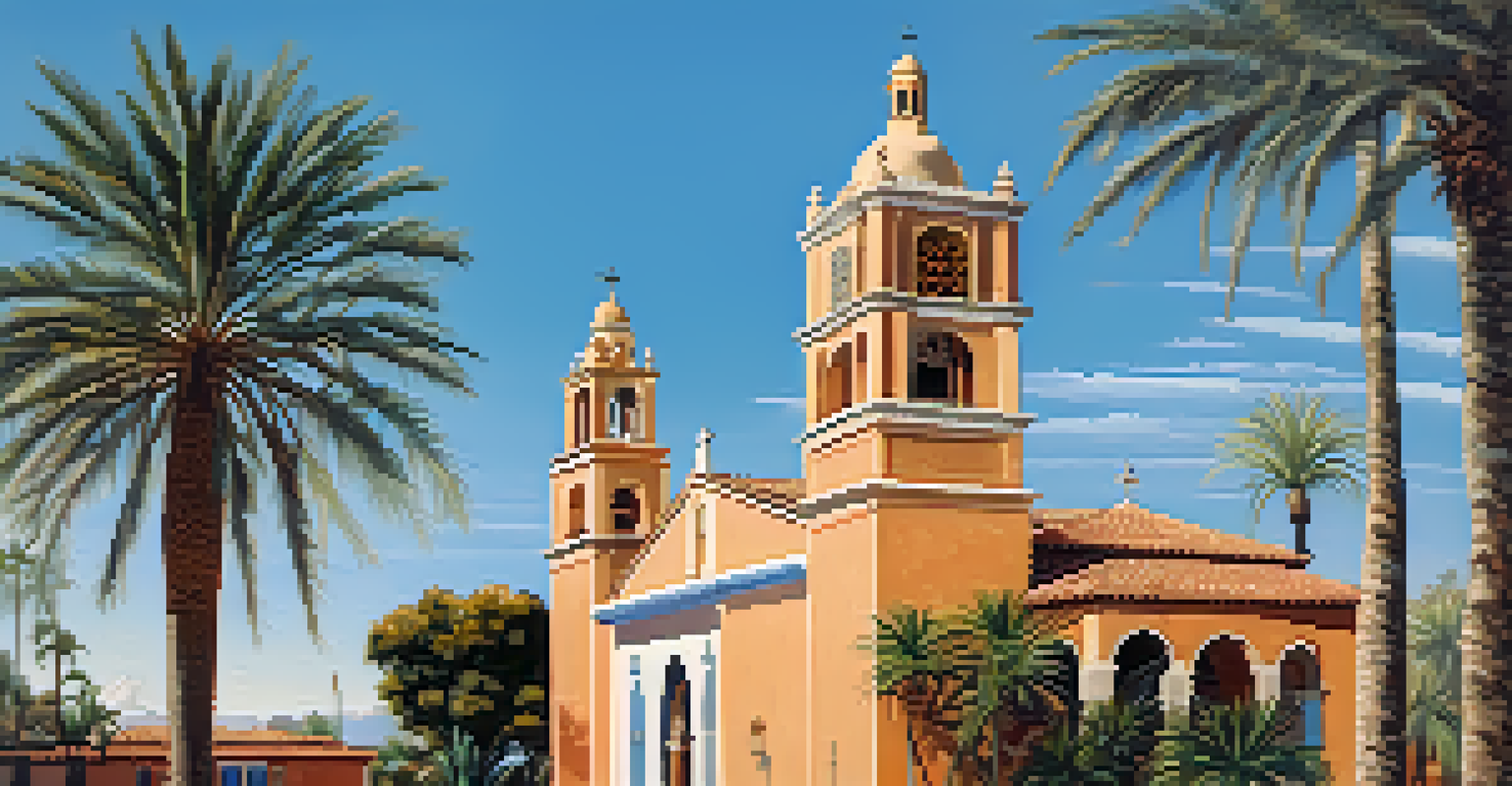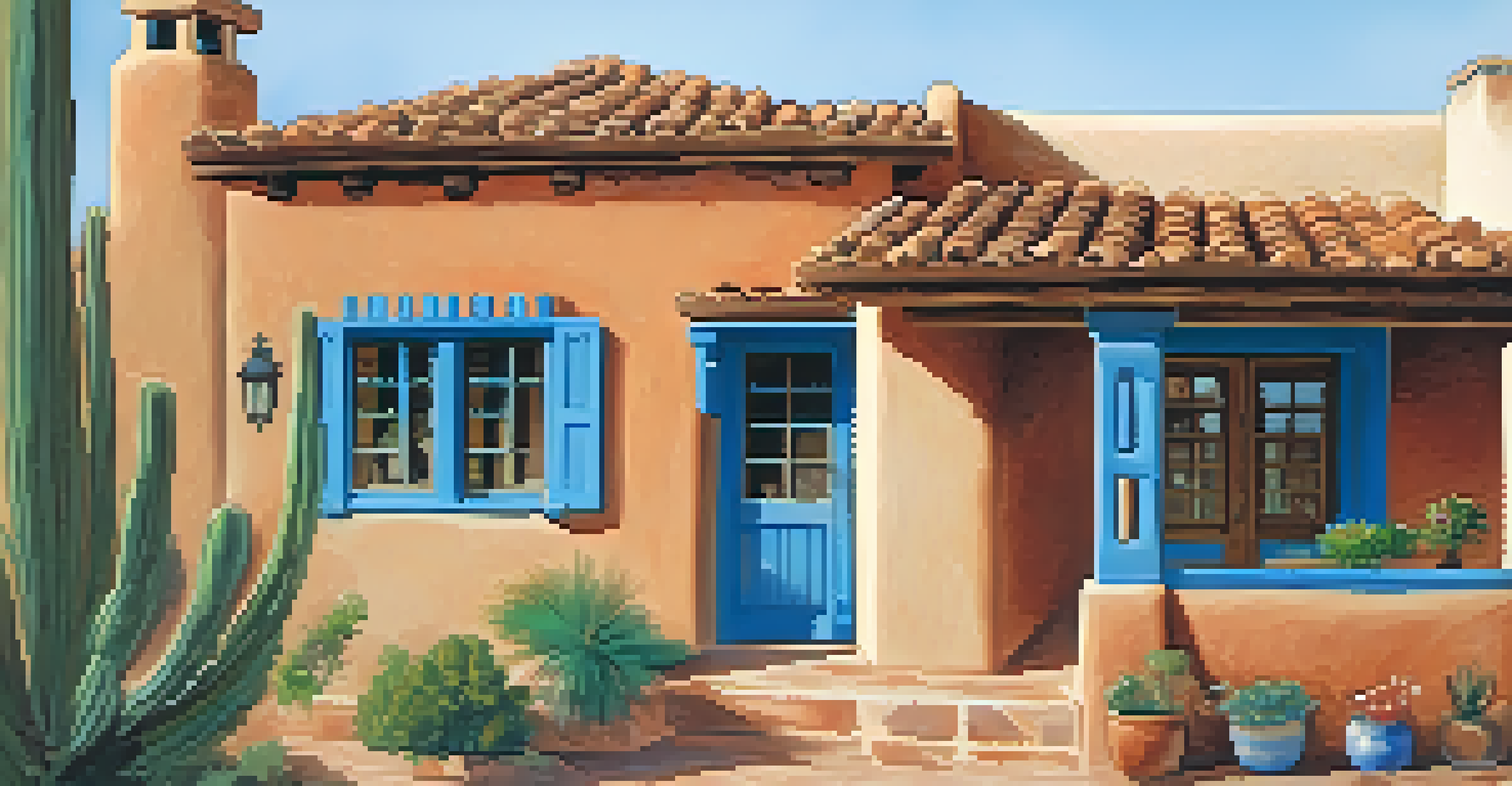Exploring the Legacy of Spanish Colonial Architecture

Understanding Spanish Colonial Architecture and Its Origins
Spanish colonial architecture is a unique blend of European styles adapted to the Americas. Originating in the 16th century, it reflects Spain's vast empire and its efforts to establish dominance in the New World. This style often incorporates local materials and indigenous influences, making it a fascinating study of cultural fusion.
Architecture is the art of how to waste space.
The architecture was not just about building structures; it was a means of asserting power and spreading Christianity. Churches and missions were central to these settlements, designed to not only be places of worship but also symbols of Spanish authority. As you explore these buildings, you’ll notice how they were strategically placed to influence local populations.
From the grand cathedrals of Mexico City to the charming adobe homes in Santa Fe, the diversity within Spanish colonial architecture showcases regional adaptations. This rich tapestry of design invites us to appreciate how history, culture, and environment intersected in the creation of these structures.
Key Characteristics of Spanish Colonial Architecture
One of the defining features of Spanish colonial architecture is the use of stucco, which gives buildings a smooth, whitewashed appearance. This not only reflects the sun, keeping interiors cool, but also creates a striking visual contrast with the vibrant colors found in tiles, wrought iron, and wooden beams. The ornate details, often inspired by Moorish designs, add an exotic flair to the architecture.

Another hallmark is the layout of the buildings, often centered around a courtyard. This design promotes communal living and provides a serene environment, often adorned with lush gardens and fountains. Such courtyards serve as a gathering place for families and communities, echoing the social dynamics of the time.
Cultural Fusion in Architecture
Spanish colonial architecture showcases a unique blend of European styles and local influences, reflecting the cultural exchange during colonization.
Roofs are typically low-pitched, covered with terracotta tiles, which are not only aesthetically pleasing but also practical for the region's climate. These roofs often feature overhanging eaves that provide shade, enhancing comfort in the heat. Each of these elements contributes to a cohesive style that is both functional and beautiful.
Notable Examples of Spanish Colonial Architecture
One cannot discuss Spanish colonial architecture without mentioning the Alhambra in Spain, a stunning example of Moorish influence. While not located in the Americas, its intricate designs and gardens inspired many colonial structures. The Alhambra's aesthetics can be seen echoed in various buildings across Latin America, showcasing the transnational flow of ideas.
Building art is a synthesis of life in the environment, a synthesis of all the arts and sciences, a synthesis of all the human aspects of existence.
In the Americas, the Mission San Juan Capistrano in California stands out as a prime example of this architectural style. Its beautiful courtyard, complete with a fountain and vibrant gardens, reflects the importance of nature in these spaces. The mission’s design serves as a reminder of the cultural and spiritual goals of Spanish colonization.
Another remarkable site is the Plaza Mayor in Lima, Peru, surrounded by colonial buildings that showcase baroque and neoclassical influences. The plaza serves as a vibrant heart of the city, where locals and tourists alike gather to experience its history. Each of these examples illustrates how Spanish colonial architecture has left a lasting mark on the landscapes of the Americas.
The Impact of Spanish Colonial Architecture on Modern Design
Today, Spanish colonial architecture continues to influence modern design, especially in regions with significant Hispanic heritage. Many contemporary homes incorporate elements like arched doorways, wrought iron details, and bright tile work, creating a seamless blend of old and new. This architectural style resonates with those looking to connect with their cultural roots.
In addition to residential buildings, commercial spaces and public structures often draw inspiration from this style. Restaurants, hotels, and cultural centers frequently feature Spanish colonial details, giving patrons a sense of history and authenticity. These designs not only attract visitors but also foster a sense of community and belonging.
Preservation of Heritage
Efforts to preserve Spanish colonial architecture are crucial for maintaining cultural heritage and historical integrity amid modern challenges.
Architects today are increasingly mindful of sustainability, often using local materials and techniques reminiscent of the original Spanish colonial methods. This not only honors the past but also promotes environmental responsibility. As we move forward, the legacy of Spanish colonial architecture remains a vital part of the conversation around design and cultural identity.
Preservation Efforts for Spanish Colonial Architecture
Preserving Spanish colonial architecture is essential to maintaining cultural heritage and historical integrity. Many organizations and local governments are dedicated to restoring and protecting these significant structures, ensuring that future generations can appreciate their beauty and history. This effort often involves careful research and collaboration with historians and architects.
However, preservation can be challenging, as some buildings face threats from urban development and climate change. Advocacy groups work tirelessly to raise awareness about the importance of these sites, often organizing community events and educational programs. Such initiatives help cultivate a sense of pride and responsibility within the community.
In many cases, restoration projects aim to not only conserve the physical structures but also revitalize surrounding areas. By enhancing public spaces and promoting tourism, these efforts can create economic opportunities while ensuring that the legacy of Spanish colonial architecture thrives. This holistic approach underscores the significance of preserving historical architecture for cultural sustainability.
Cultural Significance of Spanish Colonial Architecture
The cultural significance of Spanish colonial architecture extends beyond its aesthetic value. These structures are reflective of the complex histories of colonization, cultural exchange, and adaptation. They serve as tangible reminders of the past, inviting us to explore the narratives of those who came before us.
For many communities, these buildings embody a sense of identity and belonging. They represent a unique fusion of indigenous and European influences, making them a symbol of resilience and adaptation. By engaging with this architecture, we can gain insight into the historical and cultural dynamics that have shaped modern societies.
Modern Design Inspirations
Contemporary architecture continues to draw inspiration from Spanish colonial elements, creating a connection to cultural roots and history.
Moreover, discussing the cultural significance of Spanish colonial architecture fosters dialogue about heritage and memory. It encourages us to reflect on the impacts of colonization while celebrating the rich tapestry of cultural influences that define our world today. This ongoing conversation is crucial for understanding and honoring our shared history.
Conclusion: The Timeless Appeal of Spanish Colonial Architecture
Spanish colonial architecture captivates not only with its beauty but also with its rich narrative woven through history. From the intricate details to the communal spaces, these structures tell stories of cultural exchange, adaptation, and identity. Their timeless appeal continues to inspire architects and designers across the globe.
As we explore these architectural gems, we gain a deeper understanding of the histories and cultures they represent. Each building serves as a portal to the past, allowing us to connect with the experiences of those who lived and thrived within these walls. This connection enriches our appreciation for the artistry and craftsmanship involved.

In conclusion, the legacy of Spanish colonial architecture remains vibrant and relevant today. It invites us to celebrate our shared histories while encouraging us to envision a future where cultural diversity continues to flourish. As we look to the future, let’s cherish these architectural treasures and the stories they hold.